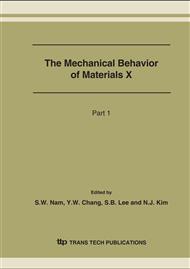p.1315
p.1319
p.1323
p.1327
p.1331
p.1337
p.1341
p.1345
p.1349
A Study on the Equipotent Switching Direct Current Potential Drop Method for the Monitoring of Piping Thinning
Abstract:
Flow Accelerated Corrosion (FAC) has become a hot issue because of aging of passive components. Ultrasonic Technique (UT) has been adopted to inspect the secondary piping. UT, however, covers only narrow region, which results in numerous detecting points and thus takes time. In this paper, we suggested a Wide Range Monitoring (WiRM) concept with Equipotent Switching Direct Current Potential Drop (S-DCPD) method to monitor the thickness of piping. Since the DCPD method covers area, not a point, it needs less monitoring points. We use the SDCPD method to screen the candidate area to monitor. Based on the monitoring results, we can determine the inspection area. To improve the applicability to the piping system, we suggested the Equipotent concept, which eliminates the leakage current. Finite element analysis results and developed resistance model are presented for the simple analysis to describe the wall thinning by DCPD signals. And also validation test results are presented, from which we can identify the consistency of the model and the experiment.
Info:
Periodical:
Pages:
1331-1334
Citation:
Online since:
August 2007
Authors:
Price:
Сopyright:
© 2007 Trans Tech Publications Ltd. All Rights Reserved
Share:
Citation:


